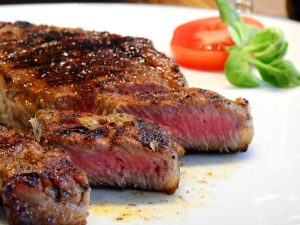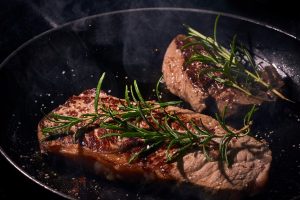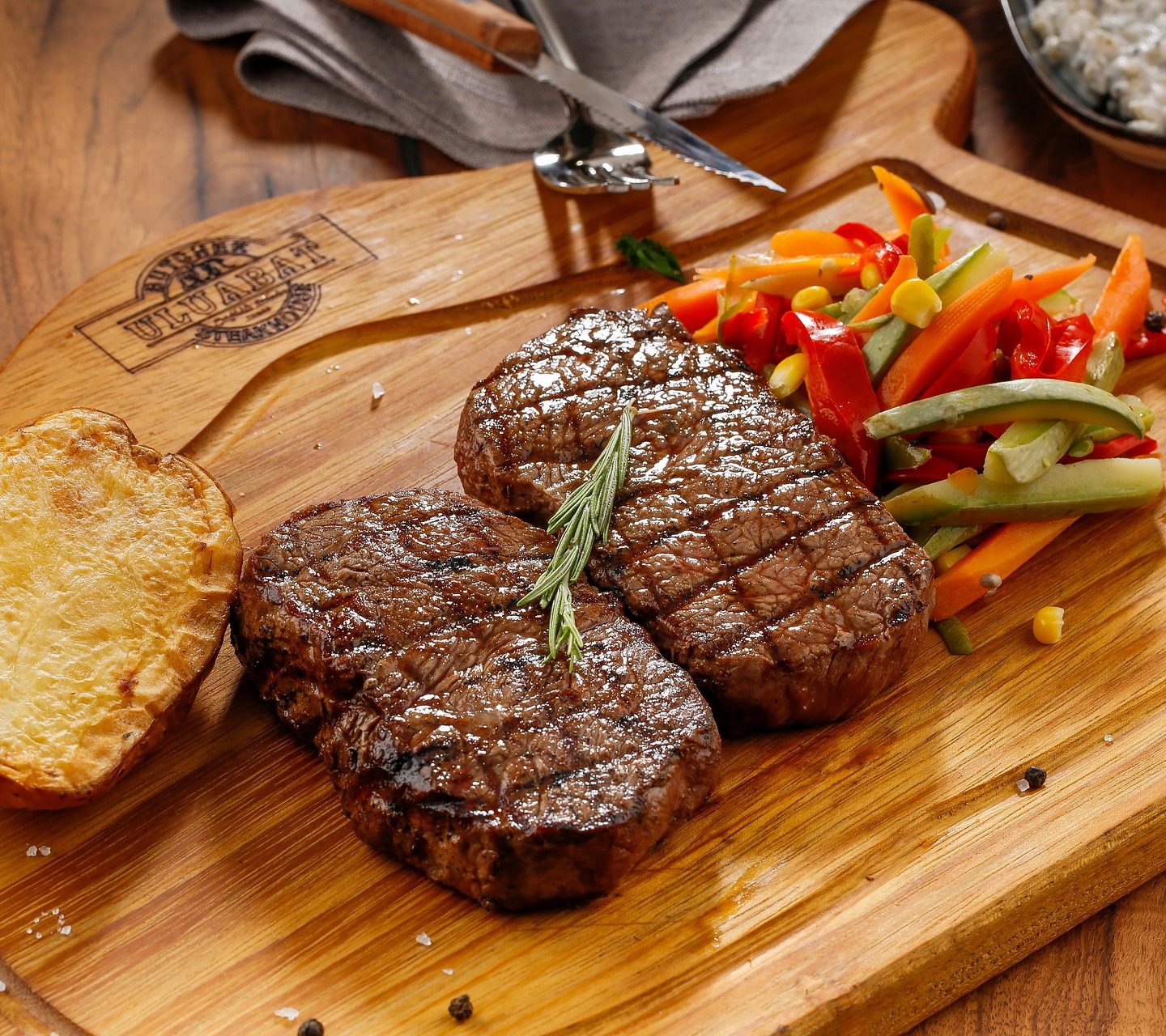Roasting steak, entrecote or beef fillet is easy, but to get it really good some things are required. The most important thing is that the meat should be room-temperature, the pan very hot and that the meat is allowed to rest for a few minutes before cutting. Of course, the best way to learn is to practice, practice and practice. Fortunately, we are here to share some tips that can help you cook a piece of meat.
Remove the meat from the vacuum package, rinse it in cold water and dry gently. Then allow the meat to get to room temperature and air before putting it in the pan, about 1 hour before cooking is sufficient.
Turn on the stove at the highest temperature, the frying pan should be very hot, do not put in the meat before the fat begins to ooze and become “silent”. Put in a big click with fat, for example, butter or rapeseed oil.
Wipe the meat dry with paper, salt, and pepper. A dry steak provides a better roasting surface
Put the meat in the pan. For medium-rare, turn the steak just when the first drop of meat juice is squeezed onto the surface, for a steak of 1 cm it takes about 1 minute, for 2 cm about 2-3 minutes. If medium is desired, leave the surface half-covered with meat juice.
Salt and pepper and turn the steak. Fry it at the same time as point 4.

When the steak is fried on both sides, move the pan from the stove with the meat in, leave it for a few minutes until it has cooled and the pan has stopped giving away sounds. In this way, the meat continues to be cooked and also has time to stop so that it does not lose too much liquid when it is then cut. If you suspect that you have over-cooked the steak slightly, lift it immediately from the pan and let it cool on a plate instead.
For thicker pieces of meat, such as flank steak, it is recommended to instead insert the frying pan into the oven (assuming the handle on the pan does this!) Of about 100–125 ° until the desired cooking degree on the meat has been reached. Feel free to put a thermometer in the meat, which should show about 52-55 ° for rare-medium rare.

Tips and tricks to cooking meat
- Avoid frying in cold-pressed oils as they can withstand high temperatures, olive oil also gives a bad taste at high temperatures. Use butter, hot-pressed rapeseed oil, ghee, coconut fat or tallow. Mixing oil and butter provides good frying properties and prevents the butter from burning.
• Feel free to use a cast-iron frying pan as it keeps the heat better and can withstand high temperatures better than Teflon.
• When the steak is flipped for the first time, pour some of the fat on the raw side, then heat the surface a little extra. Adding a sprig of rosemary or lifting garlic to the pan adds a little extra flavor to the roasting surface.
• Keep in mind that the cooking time increases the coarser fibers on the meat, a flank steak requires much longer time in the pan than an entrecote.
• Beef should never be pierced (!), At its height, it may turn pink. Throughout, there is a great risk that even a good steak will become dry, chewy and boring. If, on the other hand, the meat has become a little weird, it is nice to fry it a little gently to the desired skill level.
Pink, pink-red or red?
How should your meat feel? To start with, feel the steak before cooking so you have a better reference.
• When the steak feels like chin it is medium or pink/red inside.
• When the steak feels like the pan, it is fully cooked, which is not recommended.
• You can also use the fat pad under the thumb as a yardstick. Put your index finger on your thumb, then it feels raw. Change finger to middle finger, medium finger, ring finger, medium and small finger, well-done. Remember not to clasp your hand.
No matter how well you follow the above instructions, it is ultimately the quality of the meat that determines the end result.
